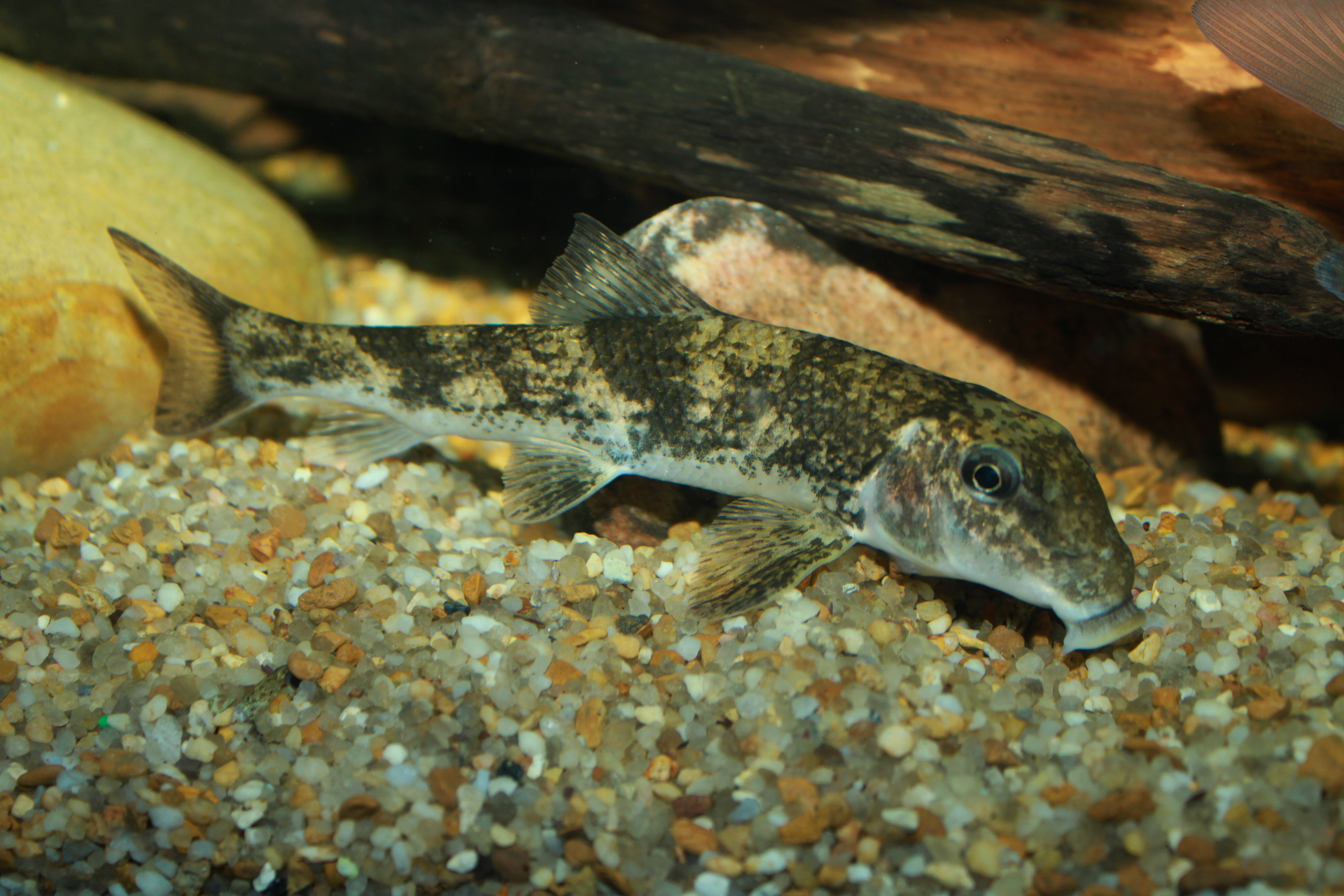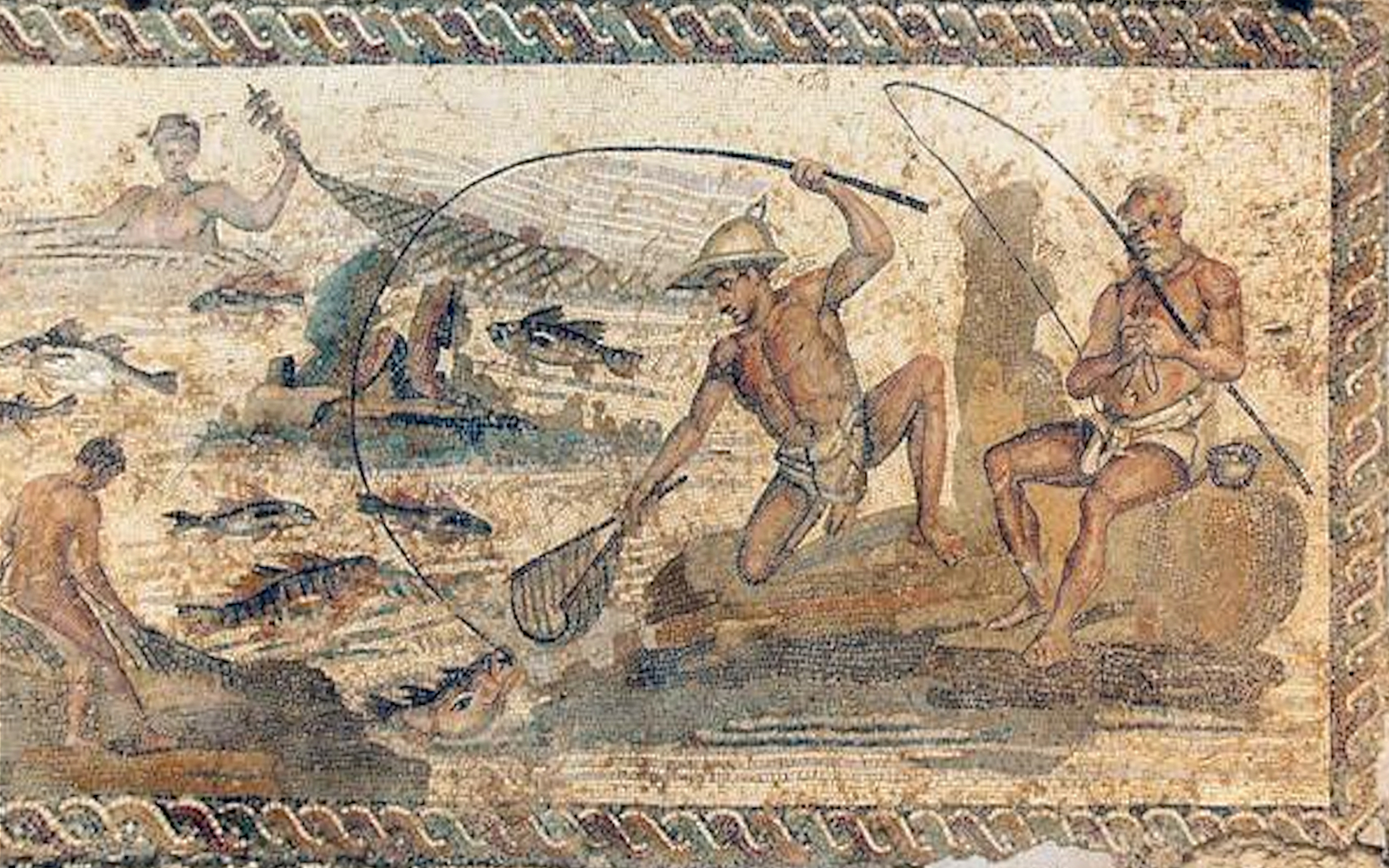|
Catostomidae
The Catostomidae are the suckers of the order Cypriniformes, with about 78 species in this family of freshwater fishes. The Catostomidae are almost exclusively native to North America. The only exceptions are '' Catostomus catostomus,'' found in both North America and Russia, and ''Myxocyprinus asiaticus'' found only in China. In the Ozarks they are a common food fish and a festival is held each year to celebrate them. '' Ictiobus cyprinellus'' can reach an age up to 112 years, making it the oldest known freshwater teleost. Description and biology The mouths of these fish are most commonly located on the underside of their head ( subterminal), with thick, fleshy lips. Most species are less than in length, but the largest species ('' Ictiobus'' and '' Myxocyprinus'') can surpass . They are distinguished from related fish by having a long pharyngeal bone in the throat, containing a single row of teeth. Catostomids are most often found in rivers, but can be found in any freshw ... [...More Info...] [...Related Items...] OR: [Wikipedia] [Google] [Baidu] |
Cypriniformes
Cypriniformes is an order of ray-finned fish, including the carps, minnows, loaches, and relatives. Cypriniformes is an Order within the Superorder Ostariophysi consisting of "Carp-like" Ostariophysins. This order contains 11-12 families, although some authorities have designated as many as 23, over 400 genera, and more than 4,250 species, with new species being described every few months or so, and new genera being recognized frequently.Eschmeyer, W.N., Fong, J.D. (2015Species by family/subfamilyin the Catalog of Fishes, California Academy of Sciences (retrieved 2 July 2015) They are most diverse in southeastern Asia, and are entirely absent from Australia and South America.Nelson (2006) At 112 years old, the longest-lived cypriniform fish documented is the bigmouth buffalo. Their closest living relatives are the Characiformes ( characins and allies), the Gymnotiformes ( electric eel and American knifefishes), and the Siluriformes (catfishes). Description Like ... [...More Info...] [...Related Items...] OR: [Wikipedia] [Google] [Baidu] |
Ictiobus
''Ictiobus'', also known as buffalofish or simply buffalo, is a genus of freshwater fish native to North America, specifically the United States, Canada, Mexico, and Guatemala. They are the largest and longest-lived of the North American suckers, reaching up to in length and more than 125 years of age. At up to 127 years for bigmouth buffalo, they can reach the highest known age for any freshwater teleost, which is a group of more than 12,000 species. Buffalofish are not carp, nor is any other catostomid; they belong to different scientific families having evolved on separate continents. Buffalofish live in most types of freshwater bodies where panfish are found, such as ponds, creeks, rivers, and lakes. ''Ictiobus'' were caught by the Lewis and Clark Expedition. From an angler's point of view, buffalofish were historically not a popular game fish because they are difficult to catch by hook and line (even though they put up a great fight). However, in the 21st Century new spor ... [...More Info...] [...Related Items...] OR: [Wikipedia] [Google] [Baidu] |
Myxocyprinus Asiaticus
The Chinese high-fin banded shark (''Myxocyprinus asiaticus'') is a popular freshwater aquarium fish retrieved on: August 21, 2007 that belongs to the family Catostomidae. It grows to about long and is unsuitable for most home aquariums.SeriouslyFish: Myxocyprinus asiaticus '' Retrieved 9 May 2013 retrieved on: August 21, 2007. In addition to Chinese high-fin banded shark, it is also known under many o ... [...More Info...] [...Related Items...] OR: [Wikipedia] [Google] [Baidu] |
Hypentelium Nigricans
The northern hogsucker (''Hypentelium nigricans'') is a freshwater ray-finned fish belonging to the family Catostomidae, the suckers. It is native to the United States and Canada where it is found in streams and rivers. It prefers clear, fast-flowing water, where it can forage on the riverbed for crustaceans, mollusks, aquatic insects, algae and detritus. It turns over small pebbles and scrapes materials off rocks and sucks up the particles, and other species of fish sometimes station themselves downstream from its activities so as to garner disturbed food fragments. Breeding takes place on gravel bottoms in shallow riffles in late spring. This fish is susceptible to such man-made disturbances as channelization, sedimentation, pollution, and dam construction. However, it has a wide range and is a common species so the International Union for Conservation of Nature has rated its conservation status as being of "least concern". Distribution The northern hogsucker is native to south ... [...More Info...] [...Related Items...] OR: [Wikipedia] [Google] [Baidu] |
Cobitoidea
Loaches are fish of the superfamily Cobitoidea. They are freshwater, benthic (bottom-dwelling) fish found in rivers and creeks throughout Eurasia and northern Africa. Loaches are among the most diverse groups of fish; the 1249 known species of Cobitoidea comprise about 107 genera divided among 9 families. Etymology The name Cobitoidea comes from the type genus, ''Cobitis'', described by Carl Linnaeus in his landmark 1758 10th edition of ''Systema Naturae''. However, its origin predates modern zoological nomenclature and derives from a term used by Aristotle to refer to "small fishes that bury... like the gudgeon." Description Loaches display a wide variety of morphologies, making the group difficult to characterize as a whole using external traits. They range in adult length from the 23 mm (1 in) miniature eel-loach, ''Pangio longimanus'', to the 50 cm (20 in) imperial flower loach, ''Leptobotia elongata'', with the latter weighing up to 3 kg (6.6 ... [...More Info...] [...Related Items...] OR: [Wikipedia] [Google] [Baidu] |
Gigging
Gigging is the practice of hunting fish or small game with a gig or similar multi-pronged spear. Commonly harvested wildlife include freshwater suckers, saltwater flounder, and small game, such as frogs. A gig can refer to any long pole which has been tipped with a multi-pronged spear. The gig pole ranges in length from 8 to 14 feet for fish gigs and 5 to 8 feet for frog gigs. A gig typically has three or four barbed tines similar to a trident; however gigs can be made with any number of tines. In the past people would attach illuminated pine knots to the end of gigs at night to give them light. Sucker gigging Suckers are a bottom-feeding fish common throughout many parts of the US. The gigging of suckers for food occurs predominantly in southern Missouri and northern Arkansas, in the region referred to as the Ozarks. Sucker gigging is usually done at night with lights to maximize the visibility of the fast moving fish. Ozarks residents of the past often waded the clear ... [...More Info...] [...Related Items...] OR: [Wikipedia] [Google] [Baidu] |
Ahjumawi Lava Springs State Park
Ahjumawi Lava Springs State Park is a state park of California in the United States. It is located in remote northeastern Shasta County and is only accessible to the public by boat.Ahjumawi Lava Springs State Park. California Department of Parks & Recreation. The park is in length and no more than wide, and has over of shoreline. It preserves a wilderness of freshwater and geologically recent flows. Waterways include the |
Catostomus Commersonii
The white sucker (''Catostomus commersonii)'' is a species of freshwater cypriniform fish inhabiting the upper Midwest and Northeast in North America, but it is also found as far south as Georgia and as far west as New Mexico. The fish is commonly known as a "sucker" due to its fleshy, papillose lips that suck up organic matter and '' aufwuchs'' from the bottom of rivers and streams. Other common names for the white sucker include bay fish, brook sucker, common sucker, and mullet. The white sucker is often confused with the longnose sucker (''C. catostomus''), because they look very similar. Etymology The specific name, ''commersonii'', is in honor of French naturalist Philibert Commerson. Description The white sucker is a long, round-bodied fish with a dark green, grey, copper, brown, or black back and sides and a light underbelly. The fish also has typical features of primitive Cypriniformes fishes, such as a homocercal tail, cycloid scales, and dorsal, pectoral, and pelvic ... [...More Info...] [...Related Items...] OR: [Wikipedia] [Google] [Baidu] |
Angling
Angling is a fishing technique that uses a fish hook or "angle" (from Old English ''angol'') attached to a fishing line to tether individual fish in the mouth. The fishing line is usually manipulated via a fishing rod, although rodless techniques such as handlining and longlining also exist. Modern angling rods are usually fitted with a reel that functions as a cranking device for storing, retrieving and releasing out the line, although Tenkara fishing and cane pole fishing are two rod-angling methods that do not use any reel. The hook itself can be additionally weighted with a dense tackle called a sinker, and is typically dressed with an appetizing bait to attract the fish and enticing it into swallowing the hook, but sometimes an inedible fake bait with multiple attached hooks (known as a lure) is used instead of a single hook with edible bait. A bite indicator, such as a float or a quiver tip, is often used to relay underwater status of the hook to the surface. ... [...More Info...] [...Related Items...] OR: [Wikipedia] [Google] [Baidu] |
White Sucker
The white sucker (''Catostomus commersonii)'' is a species of freshwater cypriniform fish inhabiting the upper Midwest and Northeast in North America, but it is also found as far south as Georgia and as far west as New Mexico. The fish is commonly known as a "sucker" due to its fleshy, papillose lips that suck up organic matter and '' aufwuchs'' from the bottom of rivers and streams. Other common names for the white sucker include bay fish, brook sucker, common sucker, and mullet. The white sucker is often confused with the longnose sucker (''C. catostomus''), because they look very similar. Etymology The specific name, ''commersonii'', is in honor of French naturalist Philibert Commerson. Description The white sucker is a long, round-bodied fish with a dark green, grey, copper, brown, or black back and sides and a light underbelly. The fish also has typical features of primitive Cypriniformes fishes, such as a homocercal tail, cycloid scales, and dorsal, pectoral, and pelvi ... [...More Info...] [...Related Items...] OR: [Wikipedia] [Google] [Baidu] |
Catostomus Catostomus
The longnose sucker (''Catostomus catostomus'') is a species of cypriniform freshwater fish in the family Catostomidae. It is native to North America from the northern United States to the top of the continent. It is also found in Russia in rivers of eastern Siberia, and thus one of only two species of sucker native to Asia (the other is the Chinese ''Myxocyprinus asiaticus''). Description The body of the longnose sucker is long and round with dark olive or grey sides and top and a light underside. They are up to in total length and weigh up to . Longnose suckers are easily confused with white suckers (''Catostomus commersoni''), which appear very similar. However, longnose suckers can be distinguished by their comparatively finer scales. Distribution and ecology The longnose sucker inhabits cold, clear waters, including lakes, pools, rivers and streams, and occasionally also brackish waters. In North America, it ranges north from the Columbia, Delaware, Missouri and Mon ... [...More Info...] [...Related Items...] OR: [Wikipedia] [Google] [Baidu] |





